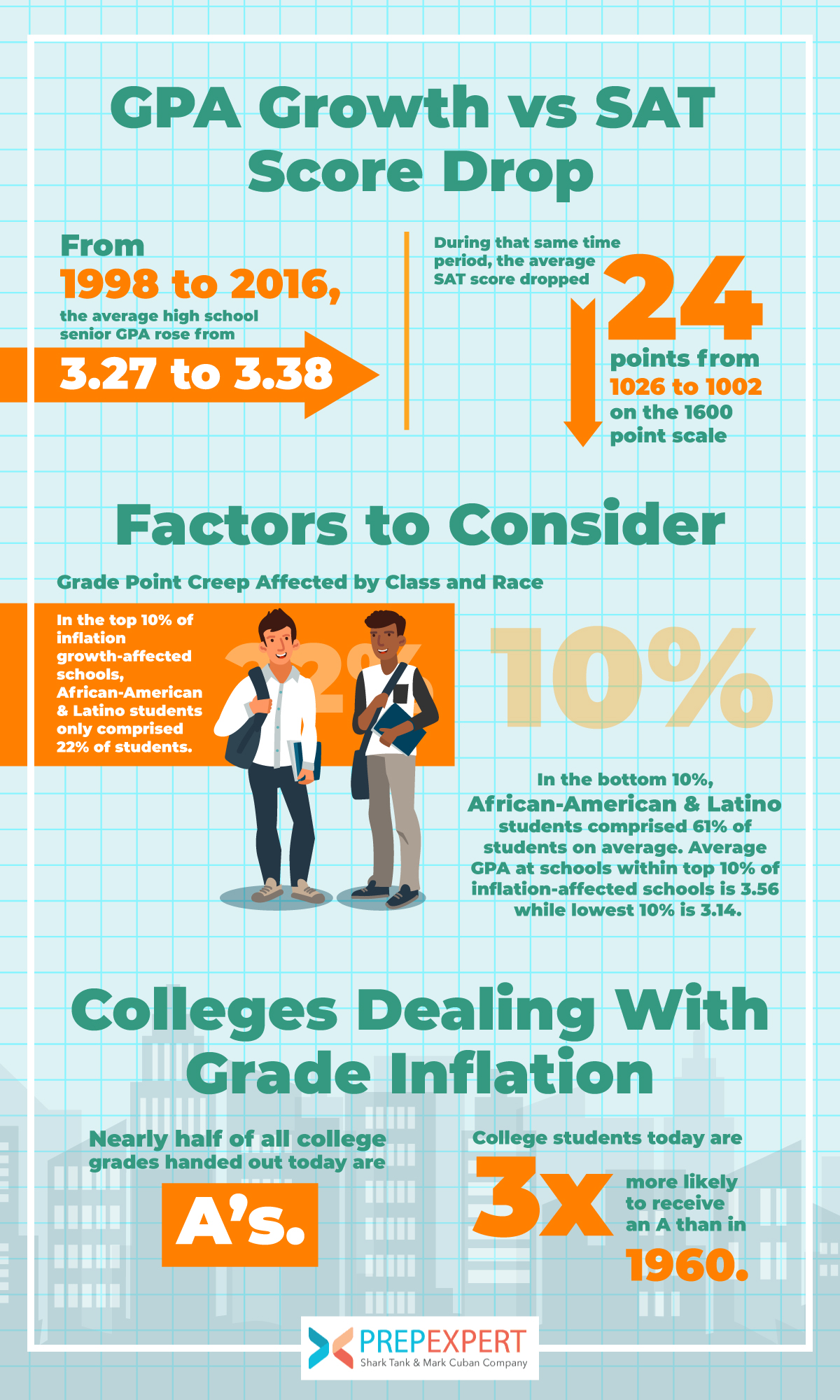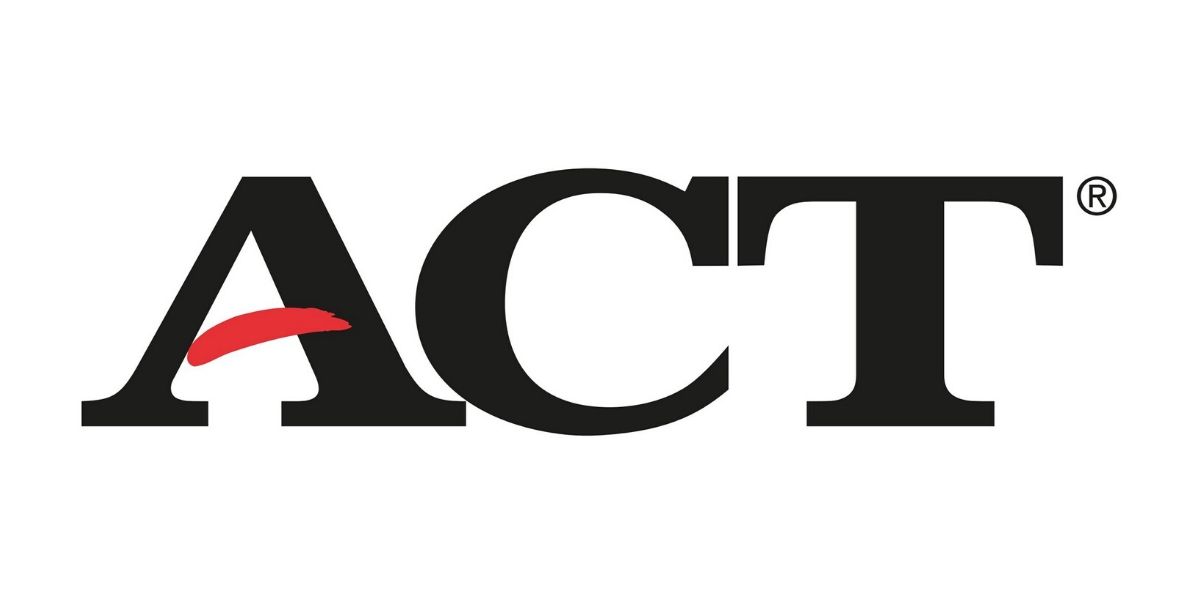Why GPAs Are Rising While SAT Scores Fall
For today’s high school students, the good news is there are more A’s being given out than ever before on their report cards. The bad news is that SAT scores are continuing to fall. There’s a serious disconnect there that’s negatively affecting students without them realizing it.
A recent study has shed light on the disturbing trend of high school grade inflation and its negative effect on SAT scores and college admissions. While high school GPAs may technically be higher than ever, their accuracy when measuring how much students are learning has come under question.
If your child is doing great in regular high school classes but hasn’t had the time to start getting ready for the SAT or ACT yet, consider signing him or her up for either our SAT prep or ACT prep courses now.
[sat_one]


SAT Vs GPA Score Imbalance – How Bad Is It?
This past summer, Michael Hurwitz of The College Board and Jason Lee of the University of Georgia, released the results of their study which examined the correlation of GPA scores to SAT scores in the past two decades.
The study found interesting but troubling results that high schools, parents, and students need to be aware of now before preparing for college.
The good news is, on paper, the numbers for high school grade averages look great:
- In 2016, 47% of high school seniors graduated with an A average.
- In 1998, only 38% of similar seniors graduated with an A average, marking a clear 9% increase over the past 18 years.
- Over this 18-year period, the GPA average rose from 3.27 to 3.38
That means that nearly half of American high school seniors graduated in 2016 with an A average, that should be fantastic news for parents across the country.
Unfortunately, as average GPA scores have steadily climbed, the opposite effect is happening to SAT scores:
- In the same, roughly 20 year period, SAT score averages have fallen from 1,026 to 1,002 on a 1600 point scale. That’s a 24 point difference in the wrong direction.
[leadmagnet_five]
Naturally, these results beg the obvious questions – “If GPA is going up, then why are test scores going down? Shouldn’t SAT scores be rising or at least staying steady on average?”
The question educators and parents now have to ask themselves is, just like with money, how much value does an ‘A’ have today versus in the past? As the nation’s high school graduation rate continues to climb, reaching 83% as of the last measure, the quality of those students’ actual education now comes under question.

No Obvious Causes But Factors To Consider
Unfortunately, the study’s authors don’t offer any easy solutions or explanations to counter their results. However, they did notice some specific factors that appear to be in play.
One troubling factor is how class appears to be driving this gradual grade point creep. The study’s authors found that the most significant rise appears to cluster around wealthier, caucasian schools (including private schools). This finding at least indicates that grade inflation does not appear to be uniform across the board. The study then broke down schools by the relative degree of inflation, which led to interesting results:
- In the top 10% of inflation growth-affected schools, African-American and Latino students only comprised 22% on average at this level, with 32% of those students eligible to receive free lunch.
- In the bottom 10%, African-American and Latino students comprised 61% on average, and more than 50% of the students there were eligible to receive free lunch.
- The average GPA at schools within the top 10% of inflation-affected schools is 3.56 while the lowest 10% (meaning that grade inflation has been largely negligible at those schools) stands at 3.14.
What this all means, in the simplest terms, is that both class and race appear to be clear indicators of schools that are most significantly inflating their GPAs, which are raising the national average overall. In some ways, this study mirrors other research that has shown growth-inflation creep into higher education as well.

Colleges Are Already Dealing With Grade Inflation
A 2016 study discovered that colleges are already dealing with grade inflation and it hasn’t been pretty.
On average, four-year colleges and universities were exhibiting noticeable grade inflation, while community colleges (which traditionally have served more lower-income and minority students) have seen little-to-no change in the increase of awarded A’s and higher GPAs.
For example, a 2016 study found that nearly half of all college grades handed out today are A’s. This percentage is substantially higher than as little as twenty years ago when the average college GPA was only 3.11. What that means is that college students today are three times more likely to receive an A than they would have back in 1960.
It’s important to note that grade inflation at the college level has been an issue dating back to the Vietnam War. At that time, professors were prone to handing out higher grades to help prevent students from failing their classes. By doing so, more students were able to stay enrolled and avoid dropping out, which would inevitably lead to being drafted into military service.
[sat_two]
While grade inflation may have been done with a perceived honorable intention back then, it hasn’t helped students graduate any better today. A Harvard Graduate School of Education study found that only 56% of college students actually graduate with a degree with six years. For students attending two-year colleges, the numbers were even worse with only 29% earning their degrees within a three-year period.

Don’t Higher GPAs Mean Better Test Scores? Not Necessarily
As GPAs continue rising, it’s natural to ask “well doesn’t that simply mean that schools are teaching students better?” You would hope the answer would be a simple “Yes”, but unfortunately, not every A is created equal.
Take, for example, how Advanced Placement and honors classes force many high schools to “weight” their GPAs, meaning that they give extra points for these courses versus standard courses.
As a result, there is a natural difference between weighted and unweighted GPAs to consider. The trouble comes when high schools begin liberally inflating their GPAs by giving more A’s out easily to everyone and inevitably begin disadvantaging some students.
College admission boards, when examining such high GPAs across the board, can easily start mistaking students whose hard work and study have justifiably earned a high average with those who, while performing more modestly in classes, end up with a higher grade because of a school’s grading policy versus their actual effort and retention.
Furthermore, the study shows that many schools are beginning to stop either calculating or publicly releasing class ranks for their students. This change takes away another key metric college admission boards often use when evaluating applicants. More troubling is that without class ranks to judge scores against, it can be that much more difficult to compare students with one another.

How SAT and ACT Scores Are More Important Now Than Ever
With GPA averages becoming less reliable, SAT scores are becoming more important to help gauge a student’s actual preparation for college.
While some universities have been working on addressing grade inflation and its effect on students, high schools, in general, have yet to tackle this issue, which appears to only be gaining momentum. The research clearly shows that as long as grade inflation is occurring unchecked across the nation’s school districts and metrics like class rank are disappearing, standardized test scores become that much more important.
This honestly doesn’t mean that students are getting less educated; however, given the heavy importance that society places on scores alone without often taking into account where students fall percentile-wise (which will always be the more accurate metric to count), it distorts how well or not students are actually performing given the somewhat arbitrary nature of point scores.
Colleges will normally weigh a potential student’s admission chances by a combination of GPA and SAT or ACT scores. Unfortunately, that formula can no longer be trusted as easily as before. What standardized tests like the SAT and ACT have going for them is that they are graded and judged at a national standard, with no room for variation. There are pros and cons to this reality.
If you’re a great test taker and understand the subject matter inside and out, then your chances of scoring high are good. However, there are plenty of kids out there that do take their studies seriously, earn pretty high grades, but are not strong test-takers. This happens quite often when students take practice ACT and SAT tests and score poorly on them, despite having a good grasp of the material.
Despite being pretty common, messing up a practice test doesn’t mean the end of the world. Thorough test preparation can fill in those gaps and help prepare students for the real thing. Again, as colleges are inevitably going to place more weight on test scores to counterbalance grade inflation, making sure you do well on them is better proof that you deserve to go to the college you want, not the one you can simply get into instead.
[sat_three]
For more test strategy, college admissions, and scholarship application tips sign up for our FREE class happening right now!
Written by Todd Marcus
More from Todd Marcus

ACT Reading Passage Types | What To Expect
Be ready for the ACT Reading section by knowing the kinds of things you'll be reading. Here are the ACT…

Taking The ACT Junior Year
If you're ambitious and want to give yourself plenty of time for score improvement, then consider taking the ACT junior…

ACT 2020 Score Release Dates
Here then are the ACT 2020 score release dates to plan around, as well as, the different kinds of available…